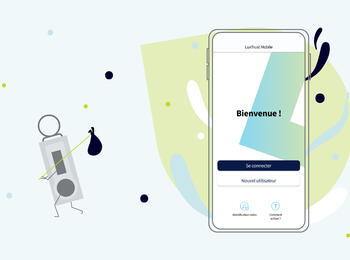1. Talk about money
“You shouldn’t talk about money!” That’s nonsense: children should learn as early as possible that money doesn’t grow on trees. Only then will they handle it carefully later on. So let's be clear: money is not a taboo subject!
But how can you teach them? It’s best to bring up the subject frequently in everyday life. Example: When you’re out shopping explain to your child that there are cheap and expensive products. Callculate how much the shopping trip cost in the end. This is how you teach your child the value of money.
Children usually understand more than adults think. You can also illustrate the connection between work and money. For example, you can give them small jobs around the house that they will get paid for.
2. Give pocket money regularly
Let's pass from theory to practice. First step: start giving them pocket money regularly. You can start doing so from the age of 6, for example. Once they have their own money, children will learn how to manage it.
Most importantly: just as in real life, there are rules!
- No credit: If your child has spent their money, they must wait until the next payday.
- No advances: As with the no credit rule – the child has to make do with what they’ve got. If they want to buy more or more expensive things, the only way to do so is to save up for them.
- Child should learn to plan what they do with their pocket money. Therefore, pocket money should come regularly and not be tied to any conditions. In other words: Give them their pocket money even if they have misbehaved.

3. Saving as a road to happiness
Adults know the situation all too well: you want to gratify a wish but there’s not enough in your bank account. Sure, if necessary you can overdraw your account or take out a loan. But this isn’t always advisable, especially if the new purchase is not urgent. The better option in this case is the traditional one of saving up.
Your child will become familiar with this scenario. To satisfy a wish, first you must save up for it. This is an important lesson whereby children learn to plan what to do with their money and understand that not all wishes can be realised immediately.
What is the best way to proceed?
- Set up a wish list with your child.
- Draw up a savings plan with your child. How much money should go in the piggy bank? How about putting the saved cash in a savings account?
- Discuss various options. For children, Raiffeisen offers a savings account and, from the age of 12 years, a V PAY Card.
You will notice that your child’s wishes change quickly, often before a major goal has been achieved. In other words: the thing they yearn for today is often less important a week later. The lesson: major purchases should always be reconsidered.

4. Enable a first contact with the bank
The older your child gets, the more independently they should handle their money.
To allow your child to learn about other methods of payment and to see how banks work, you could transfer the pocket money to the child’s own account from, say, the age of 12. That way, your child takes responsibility for their debit card and learns how to use it safely.




